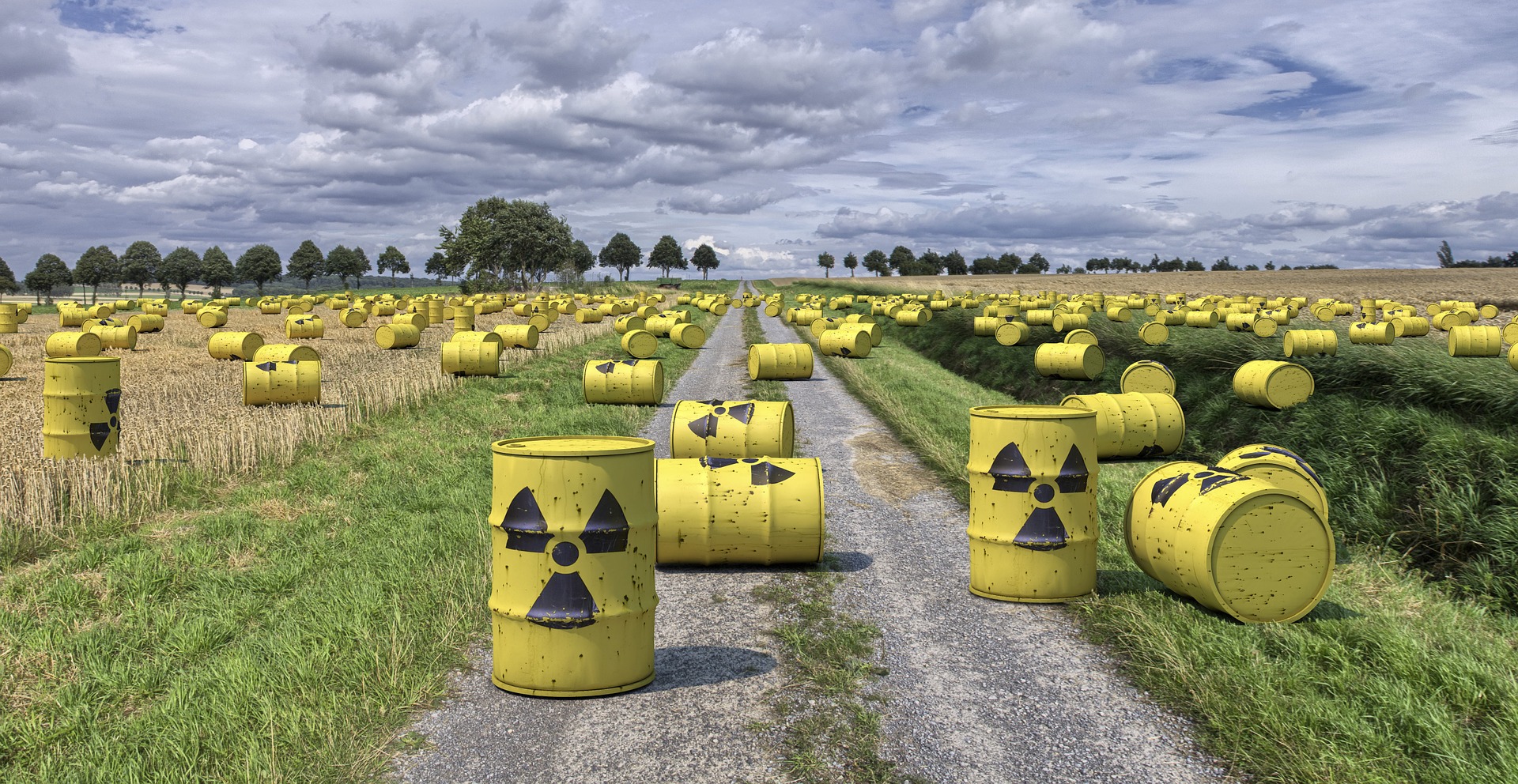Now Reading: Nuclear Forensics & It’s applications
-
01
Nuclear Forensics & It’s applications

Nuclear Forensics & It’s applications
Nuclear forensic science, often mentioned as “Nuclear forensics,” has been defined as the examination of nuclear or other material, or of evidence that’s contaminated with radionuclides, within the context of legal proceedings under international or national law associated with nuclear security. The analysis of nuclear or other materials seeks to spot what the materials how, are, when, or where the materials were made and what their intended uses were. [IAEA, 2015b]
The “analysis” within the definition above involves both radiometric and non-radiometric measurement techniques.
APPLICATIONS OF NUCLEAR FORENSICS
The nuclear forensic measurement relies on analytical techniques from a wide range of good disciplines, particularly Analytical Chemistry, Radiochemistry (chemistry that deals with radioactive elements and compounds), and Material Sciences. Techniques are often broadly classified into three classes, summarized below Table 1, which have differed, although complementary and equally important, and places important roles.
| CLASS OF TECHNIQUES | EXAMPLES | APPLICATIONS |
|
Bulk analysis |
X-ray fluorescence (XRF) and X-ray diffraction (XRD) |
Characterize the elemental and isotopic composition of the bulk material |
|
Inductively coupled plasma mass spectrometry (ICPMS) & Gamma spectrometry |
Detect and quantify trace constituents |
|
|
Imaging |
Optical microscopy |
Determine sample homogeneity or heterogeneity |
|
Scanning electron microscopy |
Assess material morphology and microstructure |
|
|
Microanalysis |
Secondary ion mass spectrometry (SIMS) |
Quantitatively or semi-quantitatively characterize the individual constituents of the bulk material |
|
X-ray microanalysis |
Particle analysis analyze thin layers or coatings |
Table1. Analytical techniques based on the type of analysis
| TECHNIQUES
METHODS |
FIRST ANALYSIS | INFORMATION | DETAILED ANALYSIS | INFORMATION |
|
Radiological |
Estimated total activity Dose rate (α, γ, n) Surface contamination |
Radiological hazard Precautions |
– | – |
|
Physical characterization |
Visual inspection Photography Size measurement Optical Microscopy Radiography Weighing |
Macroscopic Dimensions
Mass |
SEM (EDX)
SRD
TEM |
Microstructure and elemental composition, Crystal structure, Microstructure |
| Traditional Forensic Analysis |
Fingerprints, Fibres, etc., |
– |
– | – |
|
Isotope Analysis |
γ – spectroscopy |
Isotopic composition |
Mass spectrometry (SIMS, TIMS, MC-ICP-MS)
Radiochemical Separations α – Spectrometry |
Accurate isotopic composition |
| Elemental / Chemical Analysis |
– |
– |
ICP-MS
XRF Assay (titration, IDMS) GC/MS |
Chemical
impurities Chemical composition |
Table: 2 Analytical techniques typically applied in nuclear forensic investigations
SUMMARY STUDY ON APPLICATION OF NUCLEAR FORENSICS EXPLAINED BY V. VENUGOPAL
Venugopal targeting fissile material or special nuclear materials (uranium-233, uranium-235, plutonium-239, plutonium- 241) will be utilized in the assembly of nuclear weapons. In India, nuclear forensics procedures are utilized in various contexts, like the study of fuel samples from reactor cores and radioanalytical support for India’s courts.
The forensic laboratory lets the police investigate crimes (gunshot residues, plumbism, poisoning, and arsenic poisoning). They were sent to BARC because there have been queries associated with confiscated products. Venugopal noted that a lot of the samples contained parts of uranium used as counterbalance sand or a resin or tail; none ever contained uranium that exceeded 0.7% U-235. Venugopal taught that not only must the tests be conducted correctly, but the interpretation and communication of the findings are critically essential for the Indian courts because the audiences aren’t generally technically educated. As an example, if there’s a forensics laboratory at the Bhaha Atomic Research Centre (BARC), there’s an analyst merely records the numerical results of the analysis but not that the uranium is natural or is below the noise level, an alleged thief might be sent to prison for the remainder of his life due to the uranium.
Incident-involved materials are sampled and sent to laboratories where measurements are made. The info and findings are correlated with databases of nuclear materials, like the IAEA database on the drug trade, the database of research reactors, et al. Other data from the case is additionally taken under consideration, and from all this, one decides where the substance came from and eventually strengthens the protection at the power where it originated.
Analysts first recognize what the substance is when a sample arrives at the laboratory. The physical form (powder or liquid) could indicate the stage of production from which the sample comes. Usually, the study starts with non-destructive analysis, using high-resolution gamma spectrometry to classify the signature gamma-ray emission content and x-ray crystallography to research the microstructure, sample homogeneity, whether the sample reflects single or multicomponent systems—particle morphology and size. Secondary ion mass spectrometry (SIMS) is so powerful today that the isotope composition of, for example, Pu oxide or uranium, whether it’s a rod or platelet shape, is often analyzed. The shape may be a product of the warmth treatment the fabric has undergone. Thus, by using particle morphology and characteristics, one can identify if single or multiple sources of plutonium oxide are present.
Unfortunately, although SIMS is out there for other materials in India, India isn’t ready to procure the newest fissile material characterization SIMS technology. BARC may use fission track analysis to travel right down to very low levels for a few samples, especially for bioassay materials (such as determining whether urine samples contain plutonium or uranium).
The next move is to look at chemical signatures, including both radioactive (uranium, plutonium, fission products, and non-nuclear components, both of which may have been used in the manufacturing of materials. (For example, reducing the actinide oxides to metal), thorium, magnesium, calcium, iodine, sulfur, and acid residues, such as chlorine, fluorine, bromine, nitride, and nitrate; contaminants that are included in the metal from processing like beryllium, fluorine, iron, and silicon -; and additives intended to moderate reactivity. Knowledge of the total material, including the bulk and the composition, helps to figure out where the sample could have originated.
Destructive analysis, Thermal Ionization Mass Spectrometry (TIMS) and high resolution inductively coupled plasma mass spectrometry provide very precise and precise measurements of uranium, plutonium, and other materials’ isotopic composition or mass abundance. Indicators of the history and origin of the material can also be provided by the isotopic composition. If uranium contains U-236, we know that the reactor has been irradiated. If there is a higher percentage of U-234 in the uranium sample than the natural abundance that means the uranium has passed through an enrichment process. The isotopic composition of plutonium tells us that the fuel in which it was produced was burned and the neutron spectrum in the reactor in which it was produced (hard or soft). Using chemical processing techniques and fission yields, the analysis of residual isotopes can identify the isotopic abundance of krypton and xenon and find out on that basis when the object might have been cast.
By looking at the abundance of each material in a chain of radioactive decay, one can deduce when the material has been irradiated or purified in a reactor. The isotopic chronometers are called the specific radionuclides used. Cobalt-60 decays to nickel-60, for example. The cobalt-60 to nickel-60 ratio tells us when this Co-60 was produced. There are several isotopic chronometers to uranium. One will figure out whether the uranium was strictly isolated by looking at the decay daughters. Radioactive decay is a chronometer built into it. To detect daughter isotopes at ultra-trace quantities, one may use isotope dilution mass spectrometry, and isotope dilution alpha spectrometry. For example, In the case of U-233 irradiation, for instance, the U-232 material can be detected very precisely and reliably using alpha spectrometry. This is conducted in the laboratory very regularly.
The mother of all measurements made for isotopic composition is thermal ionization mass spectrometry, but obtaining these instruments is very difficult. As a consequence, BARC had to develop these instruments to evaluate nuclear fuel to help nuclear fuel manufacturers (i.e., its own TIMS). Venugopal reports that it can equate European equipment from about 1995 to 2000 in terms of precision and accuracy. More advanced TIMS devices from Germany or the United Kingdom may now be available.
The geographic location of production or how the sample may have been produced depending on the composition could be identified by extensive analyses of non-nuclear constituents. There is a database based on non-nuclear constituents of this kind. Useful knowledge can also be uncovered by alloying or cladding materials: the presence of gallium indicates that it has been used to stabilize a specific plutonium process. The non-nuclear composition could show who the manufacturer could be.
Nuclear forensics is a part of the worldwide initiative to battle nuclear terrorism. There are several examples of prohibitions against nuclear smuggling, especially in the 1990s. HEU, Pu, and even enriched lithium are among the components. Their fingerprints, whether irradiated are known well.
There are several tools used to classify the content and report on it (including glow-discharge mass spectrometry, x-ray fluorescence, gas chromatography-mass spectrometry, and others in addition to those already mentioned). The aim is to conduct this complete review and to report under clear deadlines on key sections of the analysis. The scientist must consider not just the research but how the court will use the report for that report. Venugopal has issued two examples of cases.
CASE STUDIES
Case Study 1: Lauenforde
In June 2003, the confiscated fuel pellet was analyzed. The information is available from the Institute for Trans-Uranium Elements in Germany. The sample was analyzed and, based on the composition and contaminants published in the open literature, the source of the sample can be determined. The laboratory subjected the sample to high-resolution gamma spectrometry. It was found to be irradiated uranium fuel.
The destructive analysis showed that the uranium content was about 80 percent and that the isotope was used
The dilution mass spectrometry, where the solution of the sample was spiked with uranium-236 and thorium-233, showed that the sample was enriched by around two percent. The materials were isolated and the age of uranium was found to be 12.6 years by measuring the abundances of oldsters and daughters in the uranium decay chain. The study was administered in 2003 and thus the content was generated at the top of the 1990 standard. The structure of the impurity was also studied supported the discovered age, assembly time, pellet dimensions, isotopic composition, impurity content, percentage enrichment, analysts compared these to entries in the ITU database and located the pellet for the RBMK 1300 Russian graphite-moderated reactor.
RBMK – Reaktor Bolshoi Moshchnosti, Kanalnii, or High Power Channel-Type Reactor.
Case Study 2: Munich Airport
A sample of cloth was intercepted at the Munich airport in 1994 on the Lufthansa flight to Moscow. It contained 560 grams of mixed oxide powder (Uranium and plutonium oxide or MOX) and 210 grams of lithium metal. The sample was 64.9 percent plutonium and 21.7 percent uranium, respectively, and the lithium was also heavily enriched, 89.4 percent, in lithium-6. It was observed that the isotopic composition of the MOX powder contains uranium grade warheads and low enriched uranium (1.66 percent) that could theoretically be used probably be for a naval reactor or something like that. The foremost important discovery was that there have been two distinct sorts of plutonium oxide: hexagonal platelets and rods. This suggests two different sources of plutonium for this sample. The plutonium was probably from two different lightly irradiated fuels or weapons-grade high-burn-up fuel with no direct reference to the uranium within the sample. Where the lithium came from is unknown. This case has not been solved.
Venugopal continued by noting that these and other cases indicate that radioanalytical chemists have had all kinds of technological expertise and need to classify the details to be able to survive legal scrutiny.
REFERENCES
- IAEA. (2015b). “IAEA Nuclear Security Series No. 2-G: Nuclear Forensics in Support of Investigations”. International nuclear energy Agency, Vienna, Austria, 62 pp
- 6 The Emerging Science of Nuclear Forensics | India-United States… – https://www.nap.edu/read/18412/chapter/8
- India-United States Cooperation on Global Security: Summary of… – https://www.nap.edu/catalog/18412/india-united-states-cooperation-on-global-security-summary-of-a
- Nuclear Forensics – American Chemical Society – https://pubs.acs.org/doi/pdf/10.1021/acs.analchem.5b02915
- Development of a National Nuclear Forensics Library: A … – https://www.iaea.org/publications/13438/development-of-a-national-nuclear-forensics-library-a-system-for-the- identification-of-nuclear-or-other-radioactive-material-out-of-regulatory-control
- India-United States Cooperation on Global Security: Summary … – https://books.google.com/books?id=kKJyAgAAQBAJ









